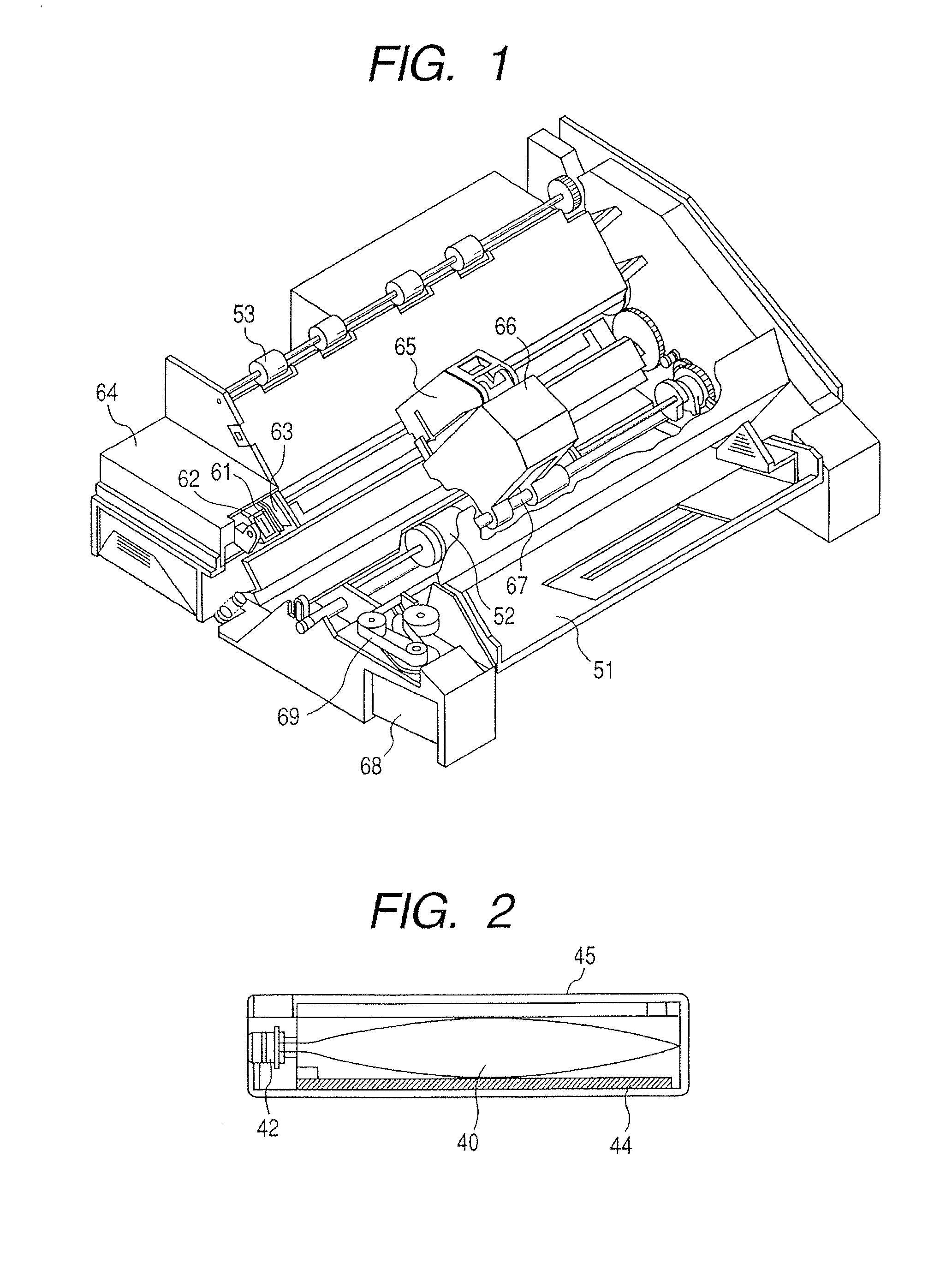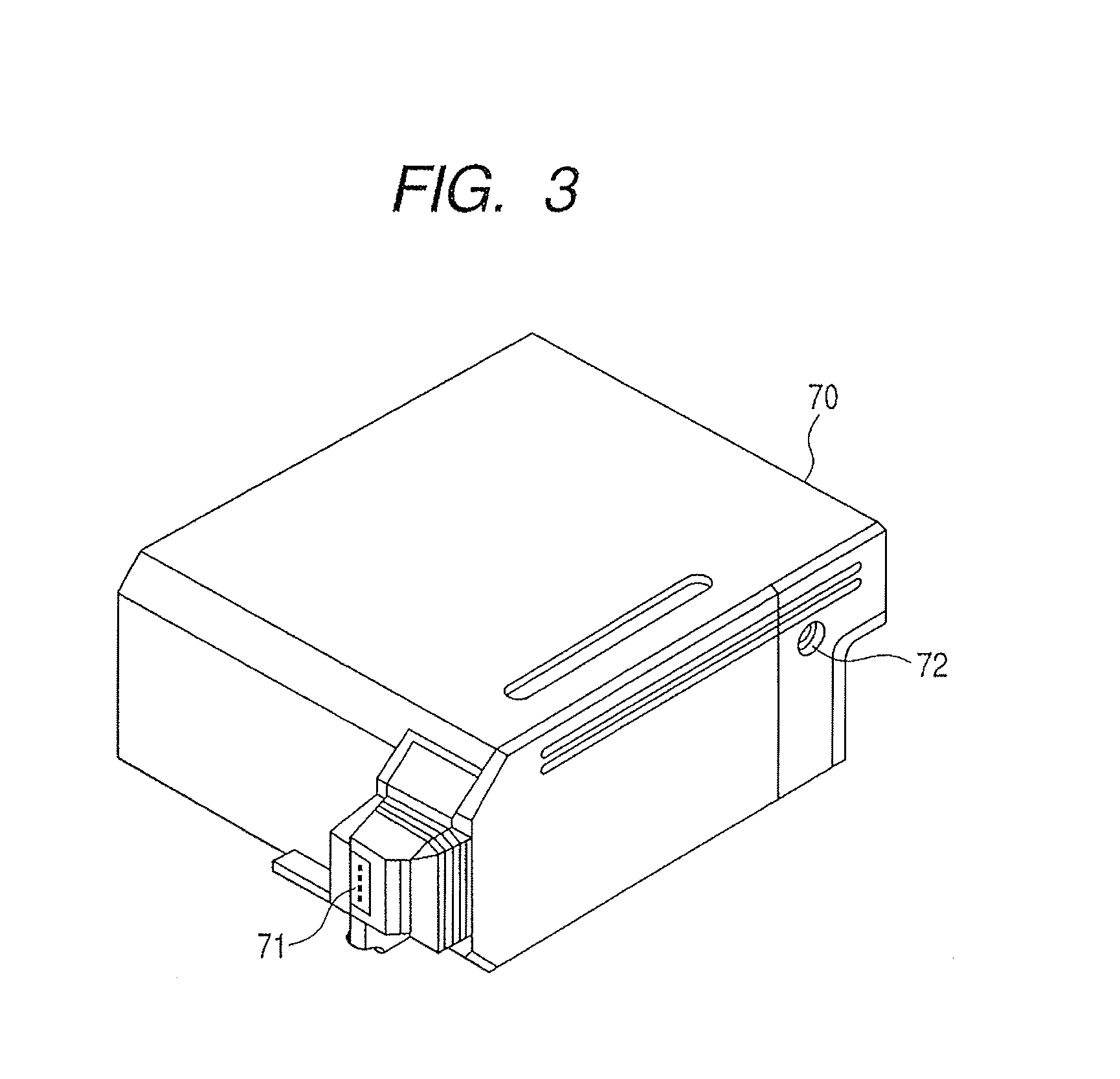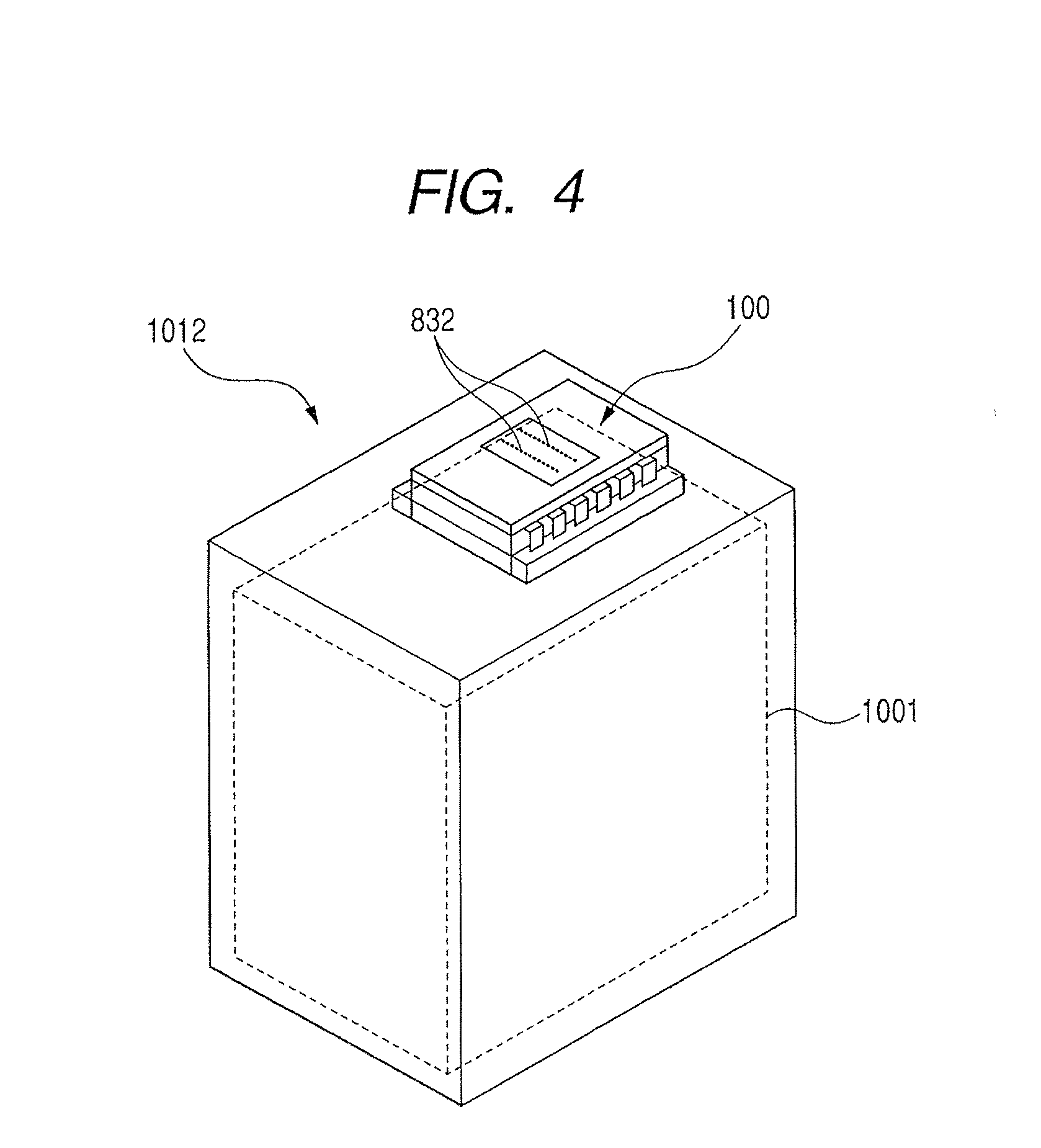Ink-jet recording pigment ink
- Summary
- Abstract
- Description
- Claims
- Application Information
AI Technical Summary
Benefits of technology
Problems solved by technology
Method used
Image
Examples
example 1
[0059]First, Random Polymers R1 and R2 to be used in Example 1 were synthesized in the following way.
[0060]Synthesis of Random Polymer R1
[0061]18 parts of 2-hydroxyethyl acrylate, 57 parts of n-butyl methacrylate and 25 parts of methacrylic acid were used as synthesis materials for Random Polymer R1. Using these monomers, these were reacted in 500 parts of 1-methoxy-2-propanol at 75° C. for 2 hours in a stream of N2 and using azobisisobutylonitrile as an initiator. The reaction product obtained was developed in 1,000 parts of hexane to remove unreacted products by precipitation purification, followed by drying under reduced pressure to obtain Random Polymer R1. This Random Polymer R1 had a weight average molecular weight of 7,800 and an acid value of 157 mgKOH / g.
[0062]Synthesis of Random Polymer R2
[0063]Random Polymer R2 was obtained in the same manner as in the synthesis of Random Polymer R1 except that, in place of 18 parts of 2-hydroxyethyl acrylate, 57 parts of n-butyl methacryl...
example 2
[0078]Preparation of Fluid Pigment Dispersion PK2
[0079]Fluid Pigment Dispersion PK2 was obtained in the same manner as in Example 1 except that, in the preparation of Fluid Pigment Dispersion PK1 in Example 1, Random Polymer R2 prepared as described above was used in place of Random Polymer R1.
[0080]Preparation of Fluid Pigment Dispersions PC2, PM2 & PY2
[0081]Fluid Pigment Dispersions PC2, PM2 and PY2 were obtained in the same manner as in the preparation of Fluid Pigment Dispersion PK2 except that the carbon black (COLOR BLACK FW18, available from Degussa Corp.) used therein was changed for the following pigments, respectively. That is, C.I. Pigment Blue 15:3 was used to prepare Fluid Pigment Dispersion PC2, C.I. Pigment Red 122 was used to prepare Fluid Pigment Dispersion PM2 and C.I. Pigment Yellow 74 was used to prepare Fluid Pigment Dispersion PY2.
[0082]Preparation of Pigment Ink K2
[0083]The following components were mixed to prepare Pigment Ink K2 by a conventional method.
Flui...
example 3
[0086]First, Random Polymer R3 to be used in Example 3 was synthesized in the following way.
[0087]Synthesis of Random Polymer R3
[0088]Random Polymer R3 was obtained in the same manner as in the synthesis of Random Polymer R1 in Example 1, except that, in place of 18 parts of 2-hydroxyethyl acrylate, 57 parts of n-butyl methacrylate and 25 parts of methacrylic acid used therein, the following materials were used. That is, Random Polymer R3 was synthesized using 14 parts of n-butyl-α-(hydroxyethyl) acrylate, 56 parts of ethyl methacrylate and 30 parts of methacrylic acid. This Random Polymer R3 had a weight average molecular weight of 7,700 and an acid value of 189 mgKOH / g.
[0089]Preparation of Fluid Pigment Dispersion PK3
[0090]Fluid Pigment Dispersion PK3 was obtained in the same manner as in Example 1 except that, in the preparation of Fluid Pigment Dispersion PK1 in Example 1, Random Polymer R3 synthesized as described above was used in place of Random Polymer R1.
[0091]Preparation o...
PUM
| Property | Measurement | Unit |
|---|---|---|
| Fraction | aaaaa | aaaaa |
| Fraction | aaaaa | aaaaa |
| Fraction | aaaaa | aaaaa |
Abstract
Description
Claims
Application Information
 Login to View More
Login to View More - R&D
- Intellectual Property
- Life Sciences
- Materials
- Tech Scout
- Unparalleled Data Quality
- Higher Quality Content
- 60% Fewer Hallucinations
Browse by: Latest US Patents, China's latest patents, Technical Efficacy Thesaurus, Application Domain, Technology Topic, Popular Technical Reports.
© 2025 PatSnap. All rights reserved.Legal|Privacy policy|Modern Slavery Act Transparency Statement|Sitemap|About US| Contact US: help@patsnap.com



